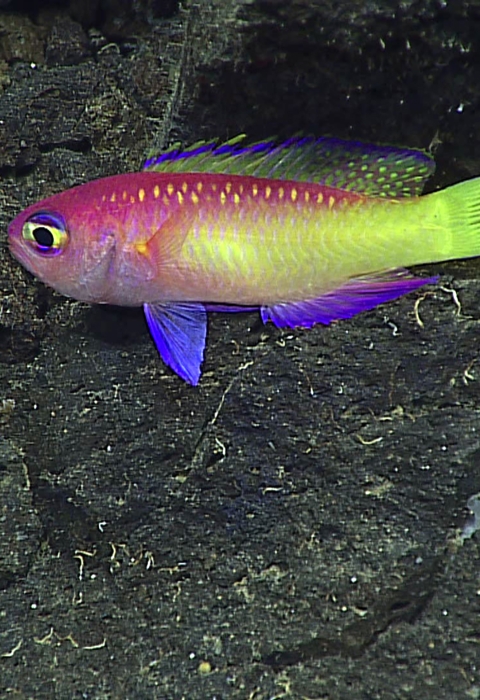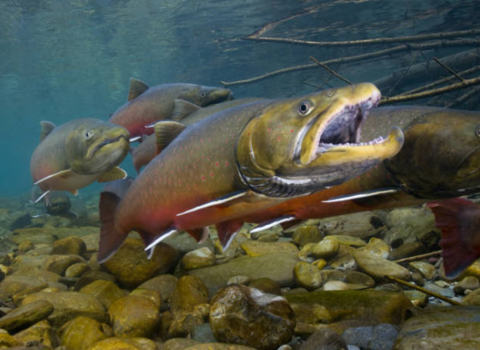The U.S. Fish and Wildlife Service (Service), NOAA Fisheries and the Commonwealth of the Northern Mariana Islands (CNMI) today released the final management plan and environmental assessment for the Mariana Trench Marine National Monument. The monument was established to protect and conserve unique and pristine habitats, historic objects, and features of high scientific interest.
The plan provides the foundation for long-term collaborative management and community stewardship of the monument, where public and community involvement will be key to achieving the plan’s vision and goals over the next 15 years. Development of the plan advances the Biden-Harris administration’s America the Beautiful initiative to restore, connect and conserve 30% of the nation’s lands and waters by 2030.
“The incredible diversity of life that exists within the remarkably steep and deep ocean environments of the Mariana Trench, its hydrothermal vents and boiling waters makes this Marine National Monument an inspiring area worthy of our reflection and wonderment,” said U.S. Fish and Wildlife Service Director Martha Williams. “The Service and our partners at NOAA Fisheries are grateful for the perspectives, knowledge and collaboration of local and indigenous communities in determining the monument’s management, improving our shared understanding and appreciation for its cultural and biological resources.”
Located in the Mariana Archipelago east of the Philippines, the Mariana Trench Marine National Monument protects approximately 95,216 square miles of submerged lands and waters. The Mariana Trench is remarkable for its steep walls, distinctive geologic features, and deep ocean life forms. Mariana snailfish, deep-sea jellyfish, giant amphipods, and translucent sea cucumbers have found a home in this harsh environment amid shaggy bacterial mats. The Mariana Arc of Fire National Wildlife Refuge/Volcanic Unit – an arc of undersea volcanoes and thermal vents – supports unusual life forms in some of the harshest conditions imaginable. Here species survive amid hydrothermal vents that produce highly acidic and boiling water. One of the coral reef sites in the Islands Unit of the monument has the highest density of sharks anywhere in the Pacific.
Under the management plan, the Service, NOAA Fisheries and the Commonwealth of the Northern Mariana Islands will work as a monument management team to engage partners; conserve and protect the marine ecosystem; and establish stewardship, research, exploration, engagement and education programs that further understanding and connect people to the unique ecosystem and its inhabitants. Shared learning and outreach activities are vital to fostering the public's connection to the monument, and will focus on providing traditional access and cultural use, developing locally relevant curriculum and educational opportunities about the unique environment of the Mariana Trench, and the sea life protected therein.
“The Mariana Trench Marine National Monument has long-standing ancestral and cultural connections to the nearby residents,” said Assistant Administrator for NOAA Fisheries Janet Coit. “From the early establishment of the monument, the local community and leaders in the Marianas have shared a desire to be involved with the monument. Their involvement has been important to the development of this management plan, and we are committed to working together to conserve and protect this awe-inspiring place.”
The final plan establishes long-term guidance to achieve monument goals and objectives, which are derived from the Presidential Proclamations, federal mandates, and public input. The Service and NOAA Fisheries selected the preferred alternative (Alternative 3), which adopts the management plan and permitting system that leverages the existing permitting programs of the joint management agencies. The final management plan was prepared with input from comments received during the 150-day public comment period from February 24, 2021 to September 22, 2021, including public meetings held in-person and virtually.
The 2009 Proclamation 8335 specified that monument management plans shall ensure the monument will be administered in accordance with the proclamation and shall provide for: ensuring traditional access by indigenous persons for culturally significant subsistence, cultural and religious uses; promoting scientific exploration and research; and providing public education and outreach programs. Traditional ecological knowledge is gained by centuries of first-hand observation and experience and can augment western scientific data. Traditional ecological knowledge will be part of the decision-making process and on-going management of the monument.
The final management plan and environmental assessment can be found on the Mariana Trench Marine National Monument website.
The U.S. Fish and Wildlife Service works with others to conserve, protect and enhance fish, wildlife, plants and their habitats for the continuing benefit of the American people. For more information, visit www.fws.gov and connect with us on social media: Facebook, Instagram, X (formerly known as Twitter), LinkedIn, Flickr, and YouTube.

